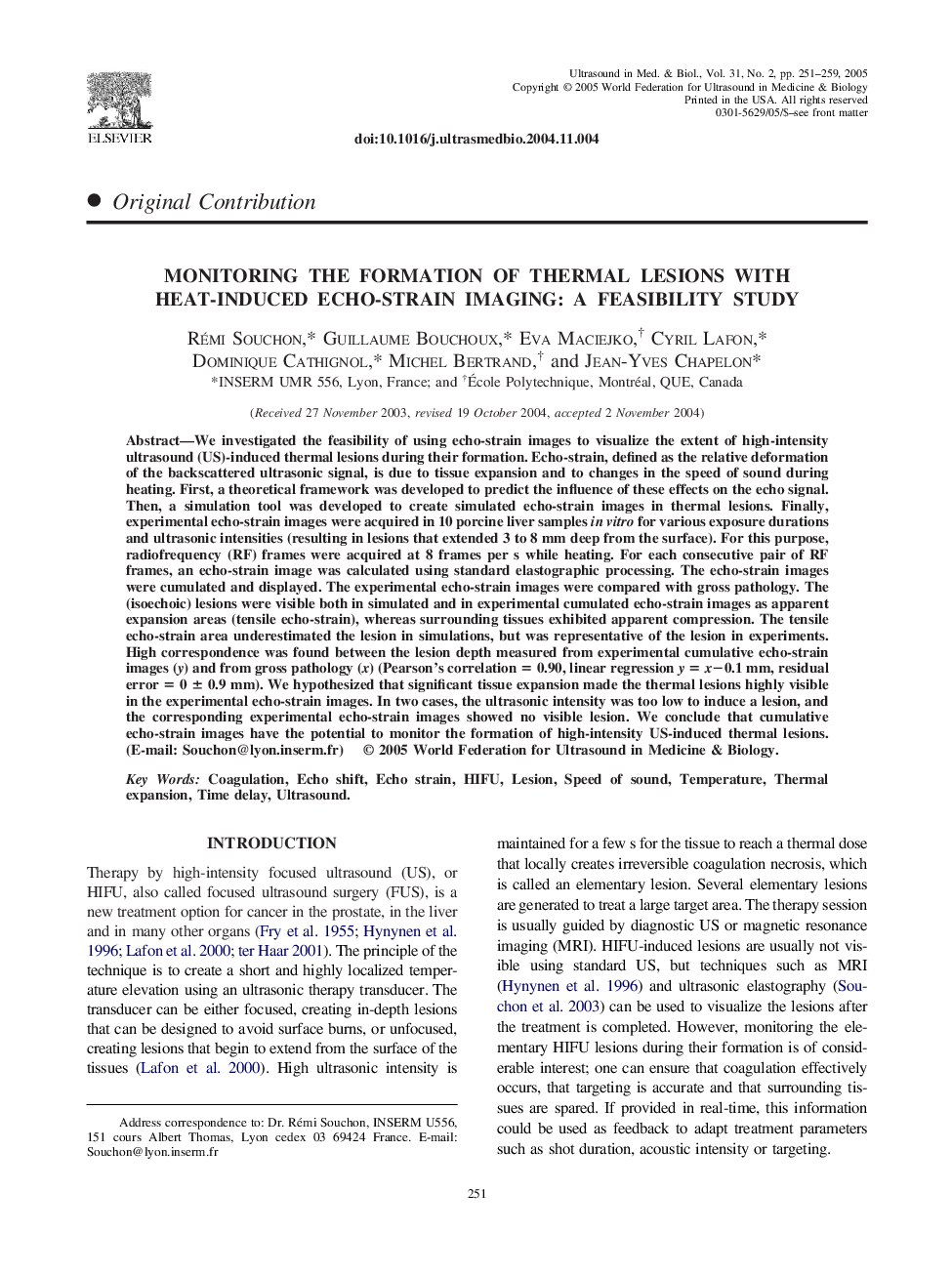| کد مقاله | کد نشریه | سال انتشار | مقاله انگلیسی | نسخه تمام متن |
|---|---|---|---|---|
| 10692534 | 1019701 | 2005 | 9 صفحه PDF | دانلود رایگان |
عنوان انگلیسی مقاله ISI
Monitoring the formation of thermal lesions with heat-induced echo-strain imaging: A feasibility study
دانلود مقاله + سفارش ترجمه
دانلود مقاله ISI انگلیسی
رایگان برای ایرانیان
کلمات کلیدی
موضوعات مرتبط
مهندسی و علوم پایه
فیزیک و نجوم
آکوستیک و فرا صوت
پیش نمایش صفحه اول مقاله

چکیده انگلیسی
We investigated the feasibility of using echo-strain images to visualize the extent of high-intensity ultrasound (US)-induced thermal lesions during their formation. Echo-strain, defined as the relative deformation of the backscattered ultrasonic signal, is due to tissue expansion and to changes in the speed of sound during heating. First, a theoretical framework was developed to predict the influence of these effects on the echo signal. Then, a simulation tool was developed to create simulated echo-strain images in thermal lesions. Finally, experimental echo-strain images were acquired in 10 porcine liver samples in vitro for various exposure durations and ultrasonic intensities (resulting in lesions that extended 3 to 8 mm deep from the surface). For this purpose, radiofrequency (RF) frames were acquired at 8 frames per s while heating. For each consecutive pair of RF frames, an echo-strain image was calculated using standard elastographic processing. The echo-strain images were cumulated and displayed. The experimental echo-strain images were compared with gross pathology. The (isoechoic) lesions were visible both in simulated and in experimental cumulated echo-strain images as apparent expansion areas (tensile echo-strain), whereas surrounding tissues exhibited apparent compression. The tensile echo-strain area underestimated the lesion in simulations, but was representative of the lesion in experiments. High correspondence was found between the lesion depth measured from experimental cumulative echo-strain images (y) and from gross pathology (x) (Pearson's correlation = 0.90, linear regression y = xâ0.1 mm, residual error = 0 ± 0.9 mm). We hypothesized that significant tissue expansion made the thermal lesions highly visible in the experimental echo-strain images. In two cases, the ultrasonic intensity was too low to induce a lesion, and the corresponding experimental echo-strain images showed no visible lesion. We conclude that cumulative echo-strain images have the potential to monitor the formation of high-intensity US-induced thermal lesions. (E-mail: Souchon@lyon.inserm.fr)
ناشر
Database: Elsevier - ScienceDirect (ساینس دایرکت)
Journal: Ultrasound in Medicine & Biology - Volume 31, Issue 2, February 2005, Pages 251-259
Journal: Ultrasound in Medicine & Biology - Volume 31, Issue 2, February 2005, Pages 251-259
نویسندگان
Rémi Souchon, Guillaume Bouchoux, Eva Maciejko, Cyril Lafon, Dominique Cathignol, Michel Bertrand, Jean-Yves Chapelon,